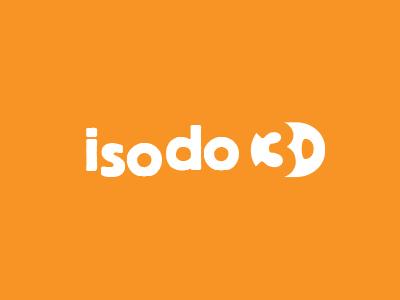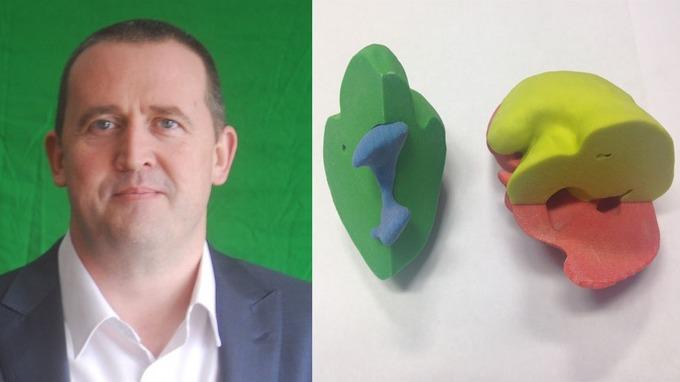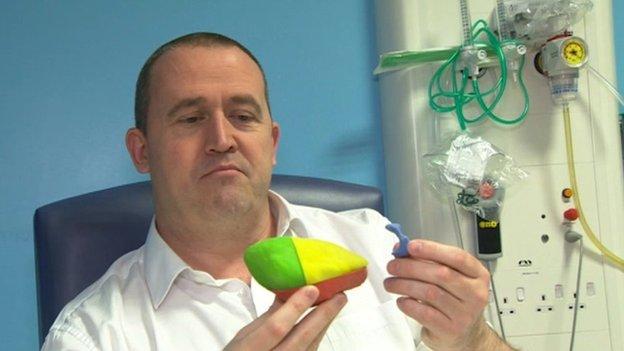 The use of 3D models for navigation during surgery is becoming more and more common, and if you think about it, it must be pretty exciting for doctors to have the new technology and assistance — almost like having a handheld GPS to pinpoint where to go while operating on an organ.
The use of 3D models for navigation during surgery is becoming more and more common, and if you think about it, it must be pretty exciting for doctors to have the new technology and assistance — almost like having a handheld GPS to pinpoint where to go while operating on an organ.
3D printed medical models are helpful in accentuating current 2D technology, which is nothing to sniff at either, as surgeons have many visual and technical tools available that were once only a pipe dream. Taking medical professionals beyond the 2D zone, innovations in 3D printing can lead to higher efficiency and greater precision.
In a scene that could have been penned by the writers from Grey’s Anatomy, John Cousins, managing director at the UK company isodo3D, was in the process giving a marketing presentation at Royal Bournemouth Hospital on the merits of 3D printing and its uses for surgical and educational models through printing replica bones and organs.
Both ironically and unfortunately for Cousins, his body decided on its own to make an example of what 3D printing can do during surgery. The Southampton man collapsed on the spot during his presentation and was transported from Bournemouth Hospital to Southampton General Hospital. As it turned out, Cousins was suffering from appendicitis as well as a large kidney stone, referred to as a ‘stag head’ kidney stone, due to its unusual shape that most likely explains why its so very painful, as it is shaped like the branches of antlers.
“It was sheer pain, I couldn’t take it anymore,” said Cousins. “I was just demonstrating how the machine works, but I was in so much pain that 10 minutes later I was in an ambulance.”
Upon arrival at Southampton General and explaining his profession and interest in 3D printing to the doctors, he was able to have a 3D printed model of his kidney with the stone embedded in it made, as well able to convince the progressive team of doctors to use the model during surgery. It all came together in a perfect confluence of timing and innovation as the team, using the 3D printed model which took five hours to print, was indeed able to save a substantial amount of time during the surgery.
“If we can give them a physical model, ultimately they could reduce the time it takes for an operation, and if you do that you can reduce infection rates,” said Cousins.
 The 3D printed model took approximately five hours to print. Sliced in half, the model displayed the exact location and size of the considerable kidney stone.
The 3D printed model took approximately five hours to print. Sliced in half, the model displayed the exact location and size of the considerable kidney stone.
“It makes our job easier going in,” said Surgeon Bhaskar Somani. “This was a large stone, almost 3.5cm, so it’s quite a big bulk and the 3D helps because it gives us a rough estimation of where to come from and to be more precise.”
Cousin’s surgery was a more basic procedure, and while the 3D printed model was a great help in that case, 3D printing technology offers potential to help in much more intricate and life-threatening procedures.
“We believe 3D printing should be for all, and not just for one-offs,” said Cousins, who points out that the models have great potential for educational purposes as well, from showing patients exactly what is going on in, for example, an organ like his kidney, with stones, or more complex issues—to demonstrating to colleagues and interns in the operating theater as to what the issues are and what they are doing in surgery.
Cousins’ company, isodo3D, based at the University of Southampton Science Park, is a partner of 3D Systems and is committed to providing a variety of 3D printing solutions, from 3D printers and 3D printing services, to materials and software.
Doctors at the facility are performing a trial with 20 patients in hopes to continue to use the technology for future, more complex surgeries, as they think use of the models could cut up to 30 minutes of time from procedures.
Would you be glad to know your own doctors were using the added benefit of a 3D printed model during a medical procedure? What did you think of Cousin’s ingenuity in using his 3D printing knowledge in this ironic case? Tell us your thoughts in the 3D Printed Medical Model forum thread at 3DPB.com.
Subscribe to Our Email Newsletter
Stay up-to-date on all the latest news from the 3D printing industry and receive information and offers from third party vendors.
You May Also Like
3D Printing News Briefs, April 13, 2024: Robotics, Orthotics, & Hypersonics
In 3D Printing News Briefs today, we’re focusing first on robotics, as Carnegie Mellon University’s new Robotics Innovation Center will house several community outreach programs, and Ugogo3D is now working...
Rail Giant Alstom Saves $15M with 3D Printing Automation Software 3D Spark
3D Spark has entered into a three-year deal with the rail giant Alstom. Alstom, a transport behemoth with annual revenues of $16 billion, specializes in the manufacture of trains, trams,...
Meltio Expands Global Reach with New Partnerships in the Americas and Europe
Spanish 3D printing manufacturer Meltio has expanded its sales network across the globe. With the addition of three new partners in the United States, Brazil, Argentina, and Italy, Meltio aims...
3D Printing Webinar and Event Roundup: April 7, 2024
Webinars and events in the 3D printing industry are picking back up this week! Sea-Air-Space is coming to Maryland, and SAE International is sponsoring a 3D Systems webinar about 3D...



































